Wirra Willa Pavilion: a Miesian-inspired retreat in New South Wales by Matthew Woodward Architecture
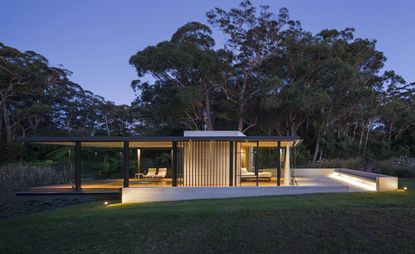
Situated within the rolling hills of Australia's Somersby in New South Wales, about an hour's drive north of Sydney, this bijou structure is an exclusive private spa and guest house, linked to a larger residence on the same grounds. Designed by Sydney-based practice Matthew Woodward Architecture, the Wirra Willa Pavilion is a small but perfectly formed domestic retreat.
Created to offer guests and visitors the chance to revel in the site's rich green landscape, the pavilion is intrinsically tied to its surroundings. 'It is a Miesian-inspired glass pavilion situated in a vibrant and fertile, rural landscape setting not dissimilar to that portrayed in a Claude Monet painting,' says Mathew Woodward. Part of the 80-acre property, the low glass and metal pavilion is situated remotely within the estate, its location adding to the sense of calm and wellness intended by its use.
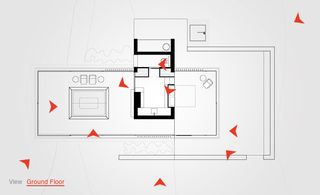
The pavilion's simple floorplan comprises a bedroom on one end and main lounge and spa area on the other, divided by services and a wet room. The fully transparent spa section weightlessly cantilevers over the adjacent natural spring-fed dam. The bed area is also fully glazed but can be closed off using a light curtain, offering instant privacy.
'Simplicity was essential to the success of the project,' explains Woodward. 'The aim was to create an elegant, unobtrusive incision into the landscape that allows for both prospect and refuge.' Strategically located on a spot with optimal views, orientation and climate, the light structure offers excellent vistas of the verdant gardens of the estate, rendering it an ideal mini sanctuary.
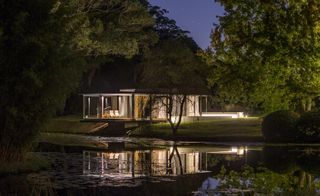
Linked to a larger residence on the same grounds, the bijou structure has been designed to offer guests and visitors the chance to revel in the site's rich, green environs
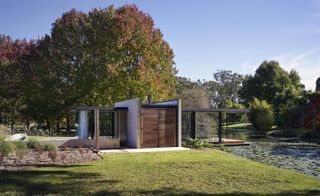
'It is a Miesian-inspired glass pavilion situated in a vibrant, rural landscape setting not dissimilar to that portrayed in a Claude Monet painting,' says Mathew Woodward
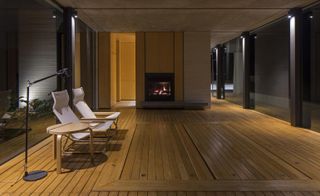
The pavilion's simple floorplan comprises a bedroom on one end and main lounge and spa area on the other, divided by services and a wet room

'Simplicity was essential to the success of the project,' explains Woodward. 'The aim was to create an elegant, unobtrusive incision into the landscape that allows for both prospect and refuge'
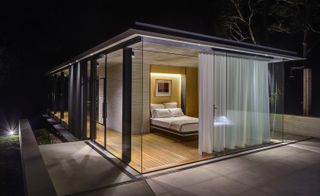
The bed area is fully glazed but can be closed off using a light curtain, offering instant privacy
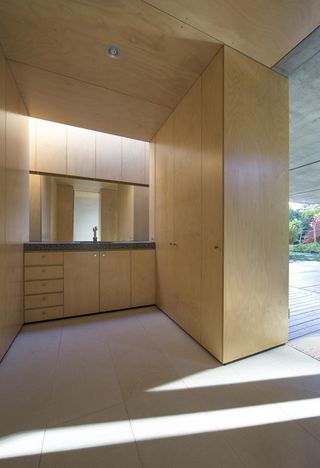
Blonde wood panelling finishes off the wet room
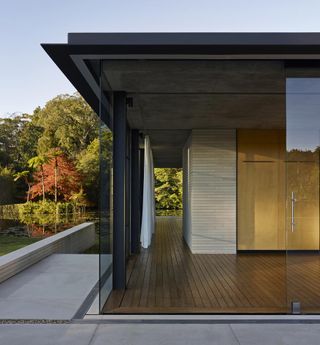
Strategically located on a spot with optimal views, orientation and climate, the light structure offers excellent vistas of the verdant gardens of the estate, rendering it an ideal mini sanctuary
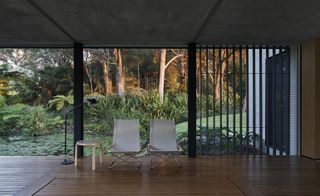
The property's lily pond offers the ultimate calming backdrop
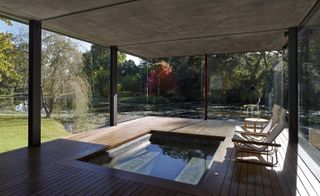
The fully transparent spa section weightlessly cantilevers over the adjacent natural spring-fed dam
Wallpaper* Newsletter
Receive our daily digest of inspiration, escapism and design stories from around the world direct to your inbox
Ellie Stathaki is the Architecture & Environment Director at Wallpaper*. She trained as an architect at the Aristotle University of Thessaloniki in Greece and studied architectural history at the Bartlett in London. Now an established journalist, she has been a member of the Wallpaper* team since 2006, visiting buildings across the globe and interviewing leading architects such as Tadao Ando and Rem Koolhaas. Ellie has also taken part in judging panels, moderated events, curated shows and contributed in books, such as The Contemporary House (Thames & Hudson, 2018), Glenn Sestig Architecture Diary (2020) and House London (2022).
-
 Thom Browne shows how to make the perfect bed with theatrical performance at Milan Design Week 2024
Thom Browne shows how to make the perfect bed with theatrical performance at Milan Design Week 2024American fashion designer Thom Browne makes his Milan Design Week debut with a new homeware collection created in collaboration with historic linen company Frette
By Scarlett Conlon Published
-
 Cosmoprof 2024: the beauty innovations discovered by Wallpaper*
Cosmoprof 2024: the beauty innovations discovered by Wallpaper*Cosmoprof invited Wallpaper* to discover the latest innovations in beauty, from tech devices to natural skincare
By Hannah Tindle Published
-
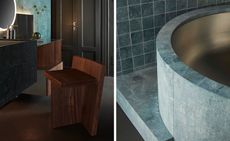 ‘The Small Hours’ bathroom collection by Patricia Urquiola for Salvatori is an ode to having time for yourself
‘The Small Hours’ bathroom collection by Patricia Urquiola for Salvatori is an ode to having time for yourselfPatricia Urquiola's new bathroom collection pushes Salvatori's formal aesthetic with an unprecedented combination of stone and steel
By Cristina Kiran Piotti Published
-
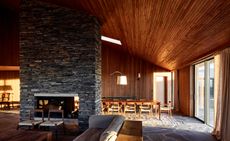 A Patagonian sheep farm gets a sophisticated remastering
A Patagonian sheep farm gets a sophisticated remasteringBringing a balance of Swiss practicality and South American cultural knowledge, Lausanne- and Buenos Aires-based architects Richter Dahl Rocha & Associés has renovated a Patagonian sheep farm and created a unique casa at its heart – as featured in the
By Harriet Thorpe Last updated
-
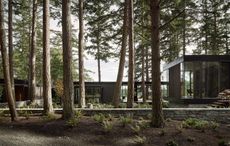 Mwworks designs floating pavilions for family retreat on Whidbey Island
Mwworks designs floating pavilions for family retreat on Whidbey IslandSettled into the sloping landscape of a farm on Whidbey Island, Washington, this new retreat by Seattle-based mwworks is built of huckleberry basalt stone and western red cedar, and designed for a multi-generational family
By Harriet Thorpe Last updated
-
 The striking, angular lines of this Ballarat home belie a project that’s all about modesty
The striking, angular lines of this Ballarat home belie a project that’s all about modestyBy Stephen Crafti Last updated
-
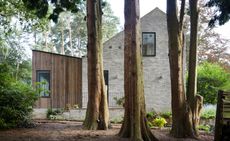 Into the woods: a Hampshire home by Alma-nac is the perfect retreat
Into the woods: a Hampshire home by Alma-nac is the perfect retreatBy Ellie Stathaki Last updated
-
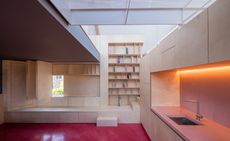 Noiascape’s refined co-living digs for generation rent in London
Noiascape’s refined co-living digs for generation rent in LondonBy Harriet Thorpe Last updated
-
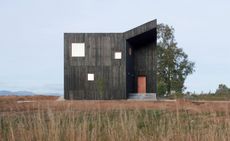 Hot stuff: a Chilean house draws on its volcanic landscape
Hot stuff: a Chilean house draws on its volcanic landscapeBy Ellie Stathaki Last updated
-
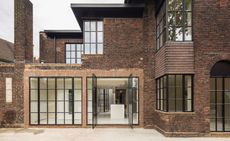 A Hampstead home by Groves Natcheva brings art deco into the 21st century
A Hampstead home by Groves Natcheva brings art deco into the 21st centuryBy Ellie Stathaki Last updated
-
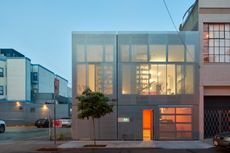 A San Francisco live/work space plays with opacity and transparency
A San Francisco live/work space plays with opacity and transparencyBy Sarah Amelar Last updated